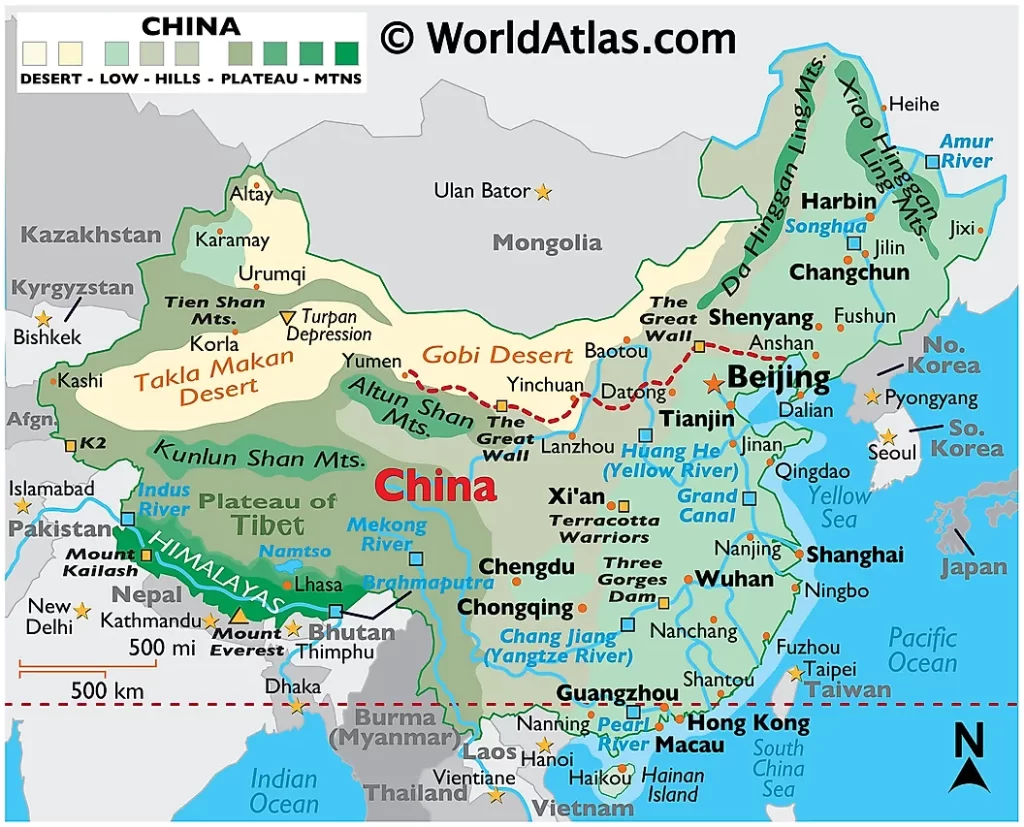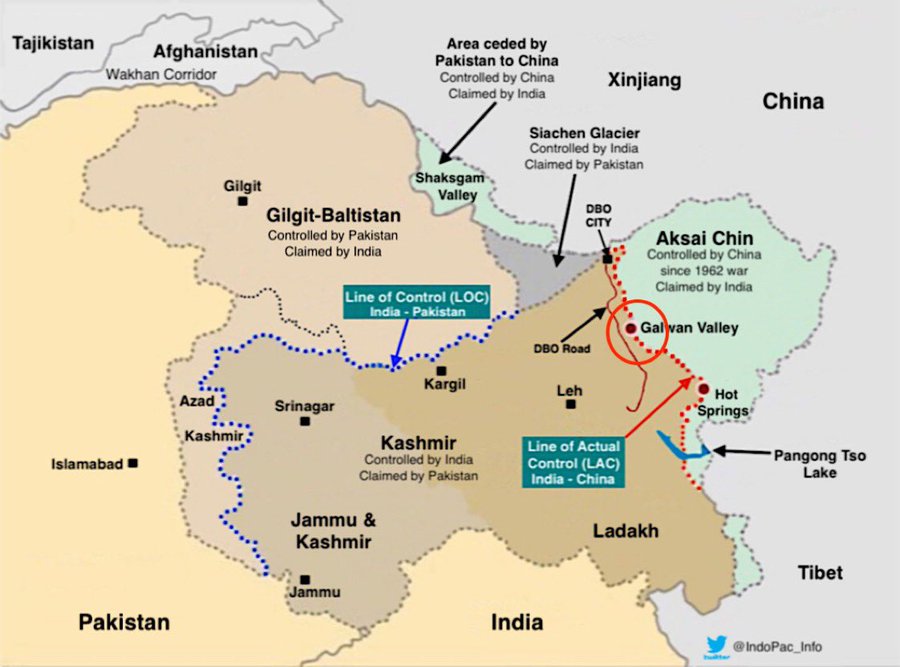CONTENTS
- On Magic Injections and Their Repercussions
- India- China and the LAC Crisis
On Magic Injections and Their Repercussions
Context:
In recent months, newspapers have consistently featured articles discussing the prevalence of ‘magic injections’ touted for their purported ability to ensure weight loss. These injections, containing the drug Semaglutide originally designed for treating Type 2 diabetes mellitus, have gained attention for their additional weight-loss effects. However, it’s worth noting that these articles often omit the fact that the weight loss drug hasn’t received approval for sale in India, despite doctors administering it to predominantly affluent patients.
Relevance:
GS2-
- Health
- Awareness in the Field of Biotechnology
Mains Question:
With reference to ‘magic drugs’ being promoted in media, examine the possible impact they can have on human health. What is the role played by regulators and doctors in this regard and how should these drugs be tackled? (15 Marks, 250 Words).
More on the Magic Injections and other Unauthorized Drugs:
- Despite global pharmaceutical companies releasing press statements cautioning against the use of this product in India, these warnings receive little media coverage.
- Furthermore, the media is also neglectful in reporting on the significant potential side effects associated with these drugs.
- For those who have experienced similar situations in the past, this scenario bears a striking resemblance to the controversies surrounding Rimonabant and Fen-Phen.
- Several decades ago, in the United States, a different category of weight loss medication was promoted as a miraculous cure for shedding pounds.
- However, this supposed miracle was later debunked, leading pharmaceutical companies to pay around $4 billion in damages as part of mass tort litigation.
- It’s worth noting that unauthorized drugs, including those for weight loss, constitute only a small fraction of such instances.
Trials, Sale Approval in India, Exceptions:
- In India, drugs typically receive approval for sale only after the local subsidiary or licensee of the global brand owner conducts clinical trials.
- Once approved, the regulatory authority mandates monitoring and reporting of all adverse events for a period of two years.
- There are instances where global pharmaceutical companies opt not to launch certain drugs in the Indian market. In such cases, patients can obtain a license from the drug regulator, based on a doctor’s prescription, to import these drugs for personal use. Similarly, hospitals can also apply for import licenses.
- However, these exceptions are narrow and do not override the general requirement for a drug to undergo clinical trials in India and receive approval from the drug regulator before being available for sale.
Risks Associated with Unapproved Miracle Drugs:
- For these unapproved “miracle drugs,” no clinical trials have taken place in India. Consequently, the potential differences in how Indians may react to the drug remain unknown.
- Doctors in India will lack information on how patients, particularly those already taking medications for conditions such as diabetes and hypertension (which may differ from prescriptions in most developed countries), will respond to these injections.
- This presents a significant and challenging risk that cannot be easily disregarded. It is a risk that cannot be accurately assessed and addressed.
Role of Doctors and Regulatory Authorities:
- Dilemmas for healthcare professionals in this context are abundant. Patients might be requesting these unapproved drugs based on recent reports of miraculous outcomes, and physicians could be actively recommending them. In such situations, doctors bear ethical responsibilities to ensure the safety and well-being of their patients.
- The motivation behind doctors prescribing these drugs raises concerns, and it is essential to determine how many practitioners administering these injections have thoroughly examined the full spectrum of effects associated with these drugs.
- Additionally, it is crucial to assess whether these doctors have received adequate training to recognize and address potential adverse events. Doctors should be aware of the high likelihood of clients using illegally imported drugs, as these medications have not yet obtained approval for sale in India.
- The recent controversy surrounding counterfeit imported drugs, such as Adcetris, prescribed for a form of blood cancer, draws additional attention to this matter. The drug regulatory body only issued a warning about counterfeit drugs after the World Health Organization did so in September 2023. Notably, this alert was delayed by two years, as Mumbai police arrests in October 2021 had initially exposed this issue.
- Consequently, it prompts the question of how sure doctors can be that the unapproved imported drugs they administer are not potentially hazardous counterfeits. Should doctors not ascertain the origin and authenticity of these drugs before administering them?
Conclusion:
These situations are often likened to luxury items like designer watches or premium whiskey. The legality of their importation or authenticity might be overlooked. The government may argue it has more urgent matters to address, just as there was a lack of concern when spurious cough syrup claimed the lives of the less privileged. However, a potential deterrent in this case could be the arrest and imprisonment of a few doctors involved in such practices. The issue raises a fundamental question about societal concern that needs to be properly addressed.
India- China and the LAC Crisis
Context:
Earlier this month, during a literary festival in Ajmer, former Army Chief Gen Naravane labelled China as India’s primary threat. He suggested that confrontation along the Line of Actual Control (LAC) was beneficial as it exposed a ground reality that Delhi was hesitant to acknowledge. Last week, External Affairs Minister S Jaishankar and Defence Secretary Giridhar Armane spoke candidly about the situation, bluntly acknowledging the truth, a stance that is likely to provoke anger from Beijing.
Relevance:
GS2-
Bilateral, Regional and Global Groupings and Agreements involving India and/or affecting India’s interests
Mains Question:
With reference to the Line of Actual Control crises, discuss how reliable has the US been for India. How have India’s and China’s engagements been on global forums and how do each of them see the crisis today? (15 Marks, 250 Words).
Past Diplomatic Uproars:
- In 1998, when India conducted nuclear test, China was cited as the reason, causing significant displeasure in Beijing. The then Foreign Minister had to travel to Beijing to address the issue.
- Sometime later, the then Defence Minister referred to China as the number one threat, although it was inaccurately reported as the “No. 1 enemy.” This sparked a diplomatic uproar, as China is highly sensitive to being perceived as a threat by any country.

India’s Remarks on China in Global Forums:
- The government aims to achieve a complete diplomatic resolution to Chinese intrusions, although a more assertive stance was taken in late February.
- During the Raisina Dialogue, the External Affairs Minister emphasized that India should not allow China to engage in psychological tactics. To counter this, he suggested employing alternative means, hinting at seeking a better balance with the help of the United States.
- His remarks followed Defence Secretary statement at the INDUS-X FORUM in Delhi, where he referred to Beijing as a bully and expressed the expectation of U.S. support in case it is needed.
- It’s noteworthy that India has not sought U.S. military support since 1962, and labelling China as a bully is likely to provoke a strong reaction.
How Reliable has the US Been?
- So far, the United States has provided India with high-tech military equipment valued at USD 20 billion, with additional financial support in the pipeline.
- During the PLA incursions in Ladakh and Tawang, the U.S. offered critical real-time intelligence and high-altitude equipment for India’s counter-deployment.
- Although it’s unclear whether discussions have taken place regarding combat contingencies on the Line of Actual Control (LAC) and U.S. assistance, the historical context of seeking U.S. military aid during the 1962 conflict with China is mentioned.
- The plea made by the Defence Secretary underscores a strong commitment to mutual support in the face of a common threat. However, it raises the crucial question of the reliability of the U.S. as a partner, given India’s historical experience with U.S. sanctions and embargoes.
- Recalling past instances, such as inserting a clause in a contract with the UK to exclude U.S. parts from Hawk trainer aircraft, underscores India’s caution.
- Similarly, the U.S. questions India’s reliability due to its close ties with the USSR/Russia and pursuit of strategic autonomy. During the Munich Security Conference, the External Affairs Minister addressed concerns about U.S. expectations, stating that India is capable of making multiple choices based on its intelligence and interests.
Border Issues and Bilateral Relations:
- Jaishankar asserts that China has violated protocols and trust, disrupting the tranquility of the border crucial for normal bilateral relations. In contrast, China maintains that border issues and bilateral relations are distinct matters.
- Its spokesperson repeatedly emphasizes to India that the border problem is a historical remnant and not representative of the entirety of China-India relations.
- Recently, the spokesperson stated, “It is unwise and inappropriate for the Indian side to insist on linking the border with bilateral relations.”
- Despite China closing the door on further demilitarization in Depsang and Demchok, pivotal launchpads for potential offensive actions by India, the Indian objective is to sustain dialogue and diplomacy.

- The External Affairs Minister remains resolute in pursuing ‘equilibrium’ in bilateral relations, even as successive Army Chiefs call for a return to the status quo ante April 2020. This approach is employed to defer any discussion of ‘China’ during the ongoing election campaign.
- During the Raisina Dialogue last month, China delivered a final blow when India pointed out that the primary obstacle to Security Council reforms is not a Western country, subtly alluding to China.
- In response, China countered, asserting that reforms should benefit all member states rather than serving the selfish interests of a few.
Conclusion:
China’s persistent coercive behavior is escalating, and Jaishankar’s mention of India’s swift counter-deployment along the Line of Actual Control (LAC) is akin to closing the stable door after the horse has already bolted. Without a significant increase in India’s deterrence capabilities against China, especially considering the military modernization budget is less than the previous year’s in real terms, Beijing will likely continue to exert dominance over Delhi.





